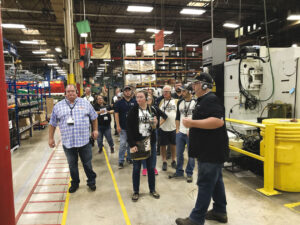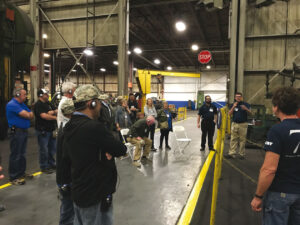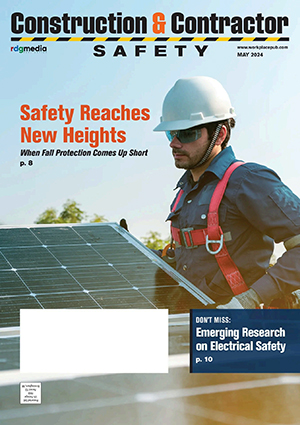Noise Pollution in Industrial Settings
By: Rick Farrell, Contributor
The National Institute for Occupational Safety and Health reports that 22 million workers are exposed to hazardous noise levels annually. Employees across all industries are vulnerable to the effects of noise pollution. However, those in industrial workplaces—mechanics, factory workers, construction workers, etc. —must take extra precautions to stay safe and reduce noise pollution.
This article discusses some of the most well-known causes of noise pollution and how loud noises can affect worker well-being. It also breaks down steps employers can take to comply with the latest regulations regarding noise pollution and keep employees safe—now and in the future.
The Impact of Noise Pollution in Industrial Settings

Loud noises and noise pollution are unavoidable in many industrial settings, but employers can take steps to reduce sound in their facilities and protect employees from the harmful effects of prolonged exposure. (photo courtesy PlantTours)
Ongoing exposure to noise pollution in industrial settings is, understandably, associated with hearing loss. It can also contribute to other health problems, including the following:
- Elevated blood pressure
- Increased stress and anxiety
- Fatigue
- Sleep difficulties
- Headaches
- Increased anger and emotional regulation difficulties
Loud noises in the workplace also impede employee communication efforts and can lead to misunderstandings and mistakes—some of which could be dangerous or even life-threatening—especially in the industrial field, where workers frequently use heavy machinery.
Occupational Noise Regulations and Standards
The Occupational Safety and Health Administration states that, during an 8-hour day, noise exposure must be at or below 85dBA (decibels). Hearing damage can occur when someone is exposed to noise at or above this level, especially for extended periods.
What does 85dBA sound like? It’s comparable to the noise made by a blender or hair dryer, or the sound of a noisy restaurant. OSHA also suggests that, if you have to shout to be heard from three feet away, the noise level is likely around 85dBA.
Common Noise Generators in Industrial Workplaces
Numerous machines and devices can contribute to noise pollution in an industrial workplace, from jet engines at an airport to chainsaws used by loggers. The table below shares some of the most common noise generators and the amount of noise (in decibels) they produce:
| Noise Source | Average Noise Level |
| Jet engine | Approximately 140dBA |
| Bulldozer | Approximately 120dBA |
| Jackhammer | Approximately 120dBA |
| Nail gun | Approximately 110-130dBA |
| Chainsaw | Approximately 91-110dBA |
| Factory machinery | Approximately 92-96dBA |
Most Effective Noise-Reducing Technologies and Equipment
Loud noises and noise pollution are unavoidable in many industrial settings. However, employers can take steps to reduce sound in their facilities and protect employees from the harmful effects of prolonged exposure.

Controlling noise pollution in industrial workplaces benefits employees, leaders and the entire company. (photo courtesy PlantTours)
Facilities
In industrial facilities, the following tools and technologies have been shown to help minimize the effects of noise pollution:
Constrained Layer Damping
Damping reduces vibrations and allows machines to run more quietly. Constrained layer damping is particularly effective (30% more, in some cases), as it reduces vibrations and prevents the damping layer from becoming damaged over time.
Noise-Canceling Windows
Putting the loudest machinery behind noise-canceling windows can help to isolate it and reduce the total exposure employees have to it. One study found that these windows could reduce sound by 50%.
IoT Noise Cancellation
Some facilities have seen success with Internet of Things (IoT) noise cancellation systems. These systems contain sensors that pick up on incoming soundwaves. The sensors then trigger sound emitters to play counteractive noises (through headphones) that cancel out the incoming sound waves before they reach workers.
Nanotechnology Soundproofing Foam
Soundproofing foam is one of the oldest, but also most effective, options for blocking vibrations and sound. Nanotechnology foam is particularly effective at absorbing vibrations. It also converts them to heat!
Workers
In addition to making changes to the facility, employers can also empower workers by providing them with tools to protect their hearing, including these popular and effective options:
Earplugs
Earplugs are some of the most popular options for blocking sound and protecting hearing, primarily because they’re easy to use and affordable. Earplugs can be pre-molded or made from moldable foam that conforms to the shape of the wearer’s ear. The latter option is typically more effective.
Semi-Insert Earplugs
Semi-insert earplugs can’t be pressed fully into the ear canal. They’re also held in place with a connecting headband. These earplugs can be effective in some environments, but they’re not customizable, making them a poor fit for some users.
Earmuffs
Earmuffs feature soft ear cushions that are covered by a hard outer shell. They sit over the entire ear and are held together with a headband (which is often adjustable). Earmuffs are often considered the best option for blocking sound.
Double Hearing Protection
In extra-loud environments, effective hearing protection such as wearing earplugs and earmuffs is the best approach. Doubling up prevents loud noises from sneaking through and damaging the worker’s hearing while they’re performing tasks with specific types of machinery.
Benefits of Noise Reduction in the Workplace
Controlling noise pollution in industrial workplaces benefits employees, leaders and the entire company. The following are some of the greatest advantages that result from prioritizing noise reduction:
Reduced Hearing Loss Risk: Naturally, reducing noise—either through tools like soundproofing foam or equipment like earmuffs—will reduce employees’ risk of experiencing hearing loss. This reduction is especially likely if employers start implementing these devices before warning early signs of hearing damage occur.
Improved Psychological Health: Noise pollution has psychological effects as well as physical. By controlling noise in industrial workplaces, employers can protect employees’ mental and emotional well-being, creating a more supportive culture and increasing employees’ job satisfaction.
Improved Communication: When employers dampen loud noises, they make communication easier for employees. Improved communication reduces the risk of misunderstandings and helps people complete tasks correctly the first time. Fewer misunderstandings and mistakes, in turn, enhance performance and increase productivity across the board.
Final Thoughts
From hearing loss and trouble with mood regulation to decreased productivity, noise pollution in the industrial workplace can contribute to numerous issues for employees and employers. Fortunately, employers can take many steps to reduce noise, protect employees and create a more efficient workplace. Those interested in experiencing these benefits should implement the strategies discussed above, especially those regarding double hearing protection for their most vulnerable employees.
About the Author:
Rick Farrell is President of PlantTours. Farrell is North America’s foremost expert in improving manufacturing group communication, education, training and group hospitality processes. He has over 40 years of group hospitality experience, most recently serving as President of PlantTours for the last 18 years. He has provided consulting services with many Fortune 500 industrial corporations, improving group communication dynamics of all types in manufacturing environments.
Share on Socials!
Dust, Fumes & Dangerous Gasses
New Professional Certificate Programs
The Ears Have It: Noise & Hearing Protection
Leaders in Industrial Hygiene
Council for Accreditation in Occupational Hearing Conservation (CAOHC)
Subscribe!
Sign up to receive our industry publications for FREE!










